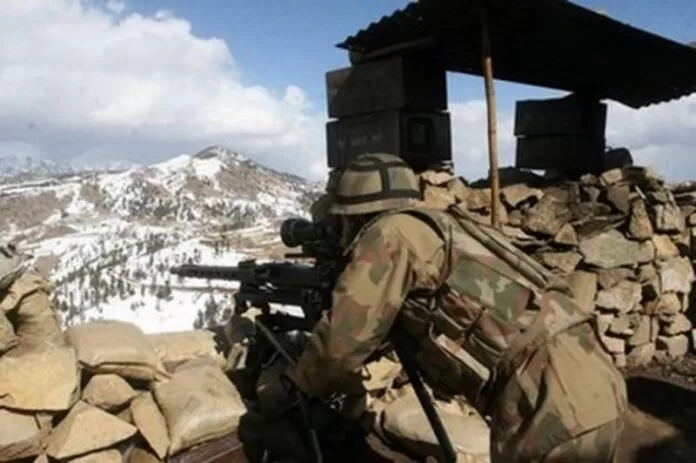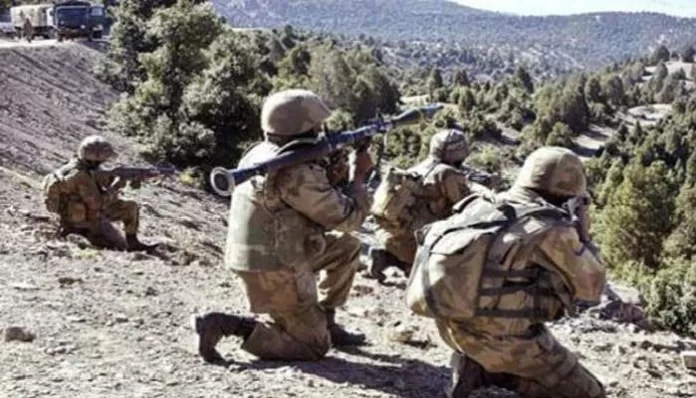North Waziristan is under international spotlight due to holing-up of a large number of hardened militants, combatants, criminals and terrorists. It also houses a portion of “Haqqani Net Work”. Haqqanis have never identified themselves as an autonomous entity; they present themselves as part of Afghan resistance under their ‘Ameer’: Mullah Omar.
Alongside usual brinkmanship, America has been making concerted effort for a face saving rapprochement with Haqqanis. The US is willing not only to engage the group in talks but is also ready to accommodate the group by giving it an important role in the future political set up of Afghanistan. United States is ready to hand over the control of three Afghan provinces to the Haqqanis if they agree to withdraw their support for the Taliban-led insurgency in Afghanistan. “Neither the Americans nor Pakistanis can completely defeat the Haqqani network…We are ready for talks – but the problem is that the Haqqanis are really not forthcoming… Therefore, we have no option but to use force against them,” opined a senior American military official. This is not the first time that America wants to entice the Haqqanis. Following the ouster of the Taliban regime in 2001, Haqqani were offered the top positions, however they opted to go along with Mullah Omar. Haqqanis are considered crucial for the success of the Taliban insurgency.
The top US military official has acknowledged that the Haqqani network is posing a real threat. “The Taliban use IEDs but the Haqqanis have the ability and capability to cause the maximum damage to the foreign forces in Afghanistan,” he said. Americans acknowledge that Pakistan’s reluctance to go after the Haqqani network is linked to its fear of a strong backlash and not necessarily because it considers the group as its proxy.
Pakistan Army effectively controls nearly 80 percent of FATA land, 15 percent is still the contested area and remaining 5 percent (North Waziristan) is under the control of militants of all shades. As a series of military operations were conducted by Pakistan Army in the adjoining areas of North Waziristan Agency (NWA), all those who could escape, have ended-up in the NWA. They are a formidable force, well armed, committed and tightly organized. Nevertheless, to club together all that is in Waziristan and brand it as Haqqanis would be an oversimplification. Over the recent years, Haqqanis have been incrementally consolidating their position inside Afghanistan. As of now, they have effective hold over at least seven provinces. Hence, their critical dependence to hangout to North Waziristan has declined.
During earlier military operations by Pakistan Army in FATA, ISAF did not extend a helping hand by sealing their side of the border, instead before each sub-operation, ISAF was seen as reducing its presence along the Pak-Afghan border, thus allowing free and safe movement of militants into Afghanistan and back. This helped the militants to rest, rearm and re-enter. This time Pakistan has communicated that operation would be conducted if ISAF/NATO seals off the border, while remaining on their side. However, ISAF’s ability and will to deploy sufficient troops on the Afghan side of the border is rather doubtful.
Frenzy about military operation in the NWA that had picked its momentum once again is nearing a fizzle. What started with US Secretary of Defence, Leon Panetta’s statement that he was pleasantly surprised that the Pakistan Army appeared ready to conduct an operation in North Waziristan was soon overtaken by the controversy of “joint” versus “coordinated” operations. Joint operations meant American boots on the ground. However, after General Mattis’ visit, it was explained that the US troops will operate on the Afghan side of the Durand line, while the Pakistani Army operates on their territory.
However, due to the complexities involved, the pattern is of one step forward and two backwards. Reports of military operation in the NWA caused a lot of panic among the locals who began fleeing the area in a large number, thus rendering thousands of people as IDPs. Though Army and the local political administration announced that there will be no operation, both did not have enough credibility to have their word accepted. Denials only added to confusion and fed the rumour mill.
The idea of joint operations also did not go down well with the public, therefore, Pakistan Army has ruled out this option, while maintaining that an operation might be launched when necessary. Likewise, American side has also pulled back from the brink. Deputy American ambassador Richard Hoagland has recently said, “We can make strong requests, we can give advice, we can seek cooperation, but we cannot make a demand on a sovereign nation”.

Even if military operation actually materializes this time, it will only buy temporary respite and will cause more internal strife in Pakistan. At best, it would be a tactical success as strategic gains would be neutralized by the losses suffered due to backlash in the heartland of the country. The safe havens will move and emerge somewhere else. The operation is likely to widen the war and engulf Pakistan in it more thoroughly and severely. Pakistan Army has declared that it will abide by the directions of the government and national imperatives on this issue.
However, Opposition Leader, PTI & JUI Chiefs, have announced their staunch opposition to any military operation in North Waziristan. This divide warrants that there must be a nation-wide debate culminating to a consensus on how to proceed with this war from now onwards. Formulation of withdrawal strategy form this open ended war is long overdue.
All states party to Afghan conflict concede that the war needs to end sooner rather than later. Difference of opinion is whether the end will come in the form of a decisive victory, or a ceasefire or a complete withdrawal of the US troops. Victory parameters need to be specifically defined; however, for sure, the conflict will not end with a decisive win for any side. Whether Pakistan should launch military operation in North Waziristan Agency or not has long been a sensitive issue between Pakistan and the US.
During the ongoing Yes /No hypes about this military operation, one thing has clearly emerged that there is no national consensus about the ownership of this war. Only a segment of leadership owns it, the remaining segment does politics on it; and the public does not even associate with it. Apparently, the effort is being put-in without a clear vision, mission and strategy. War is being fought on day-to-day basis, with the emerging reality that ‘the only easy day was yesterday.’ For Americans, time for a negotiated settlement is running out fast. For Pakistan, entanglement is becoming suffocating. It is indeed an unfortunate state of affairs.




